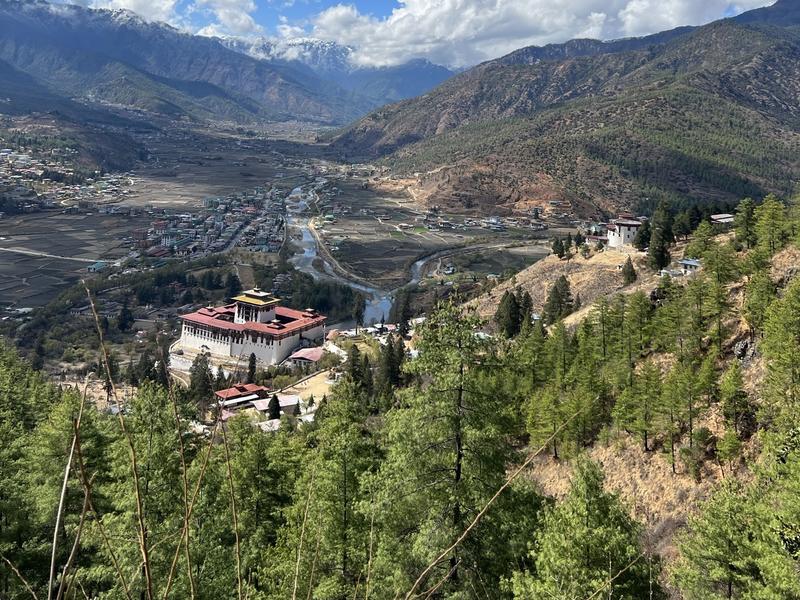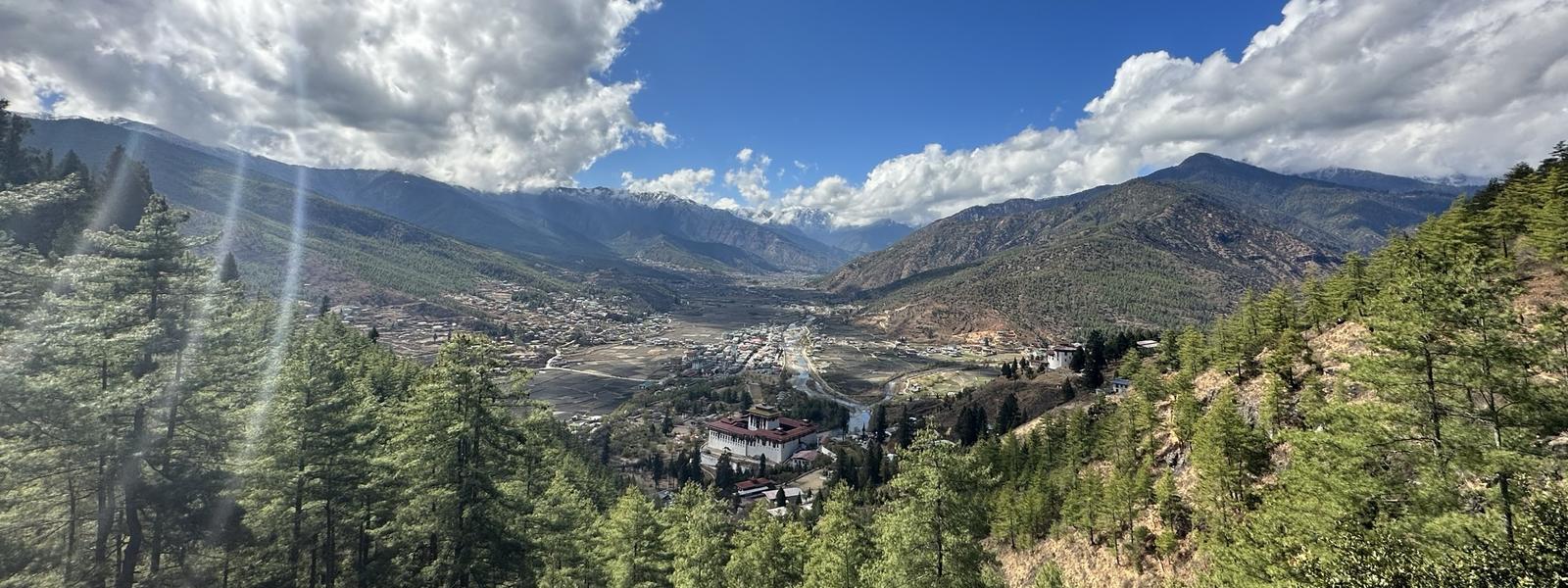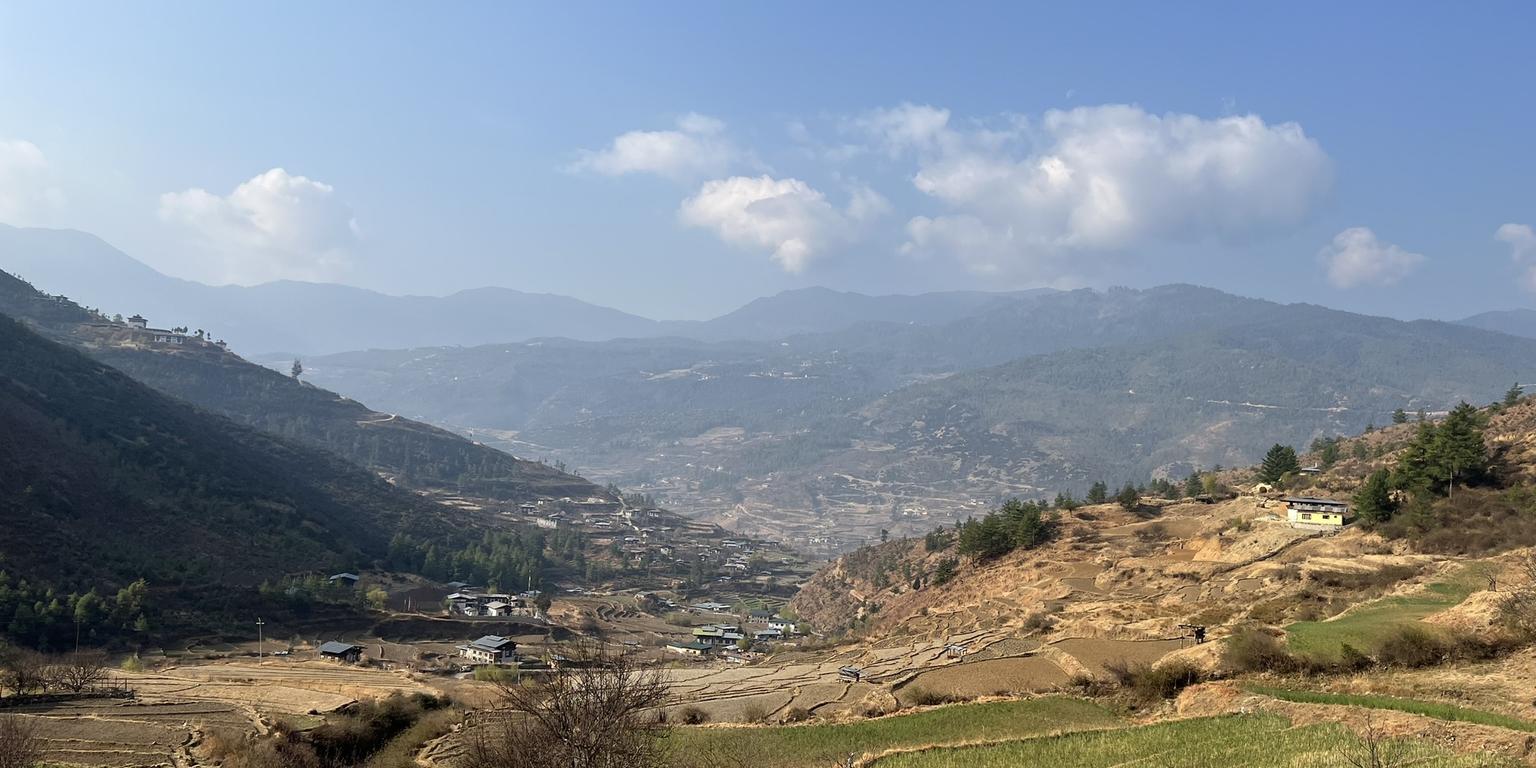Paro
You’ll encounter traces of modernity in Paro, such as smartphones and Western-style coffee, but most of the time this quaint historic town conforms to the impression of Bhutan as a world apart. It seems virtually untouched by the 21st, or even the 20th century. Flights descend through Himalayan peaks and emerge over the wide, fertile valley, carved in two by the broad Paro Chhu river. Below lie rice paddies, tiny villages, and forests of blue pine, and on the riverbank sits Paro: the gateway to Bhutan’s hidden Himalayan paradise.
Three things to do in Paro
Obviously there's a lot more, this is just to get you started...
Strong cultural connections
On the short drive from Paro International Airport (the only one in Bhutan) one of the first things you’ll notice is that almost everyone wears the national dress: long kimono-style robes printed with vibrant patterns for women, and kilt-like outfits for men. Entering the town, colourfully painted buildings line a trim main street, which bustles with workshops where you can haggle for traditional handicrafts. Visitors are more than welcome to spin the prayer wheels at most dzongs and chortens in Bhutan, and there’s always a warm welcome for visitors who want to discover more about the country’s culture. However, it’s important to dress conservatively while inside the temples and shrines, removing hats and shoes, and to always walk around the edges in a clockwise direction.
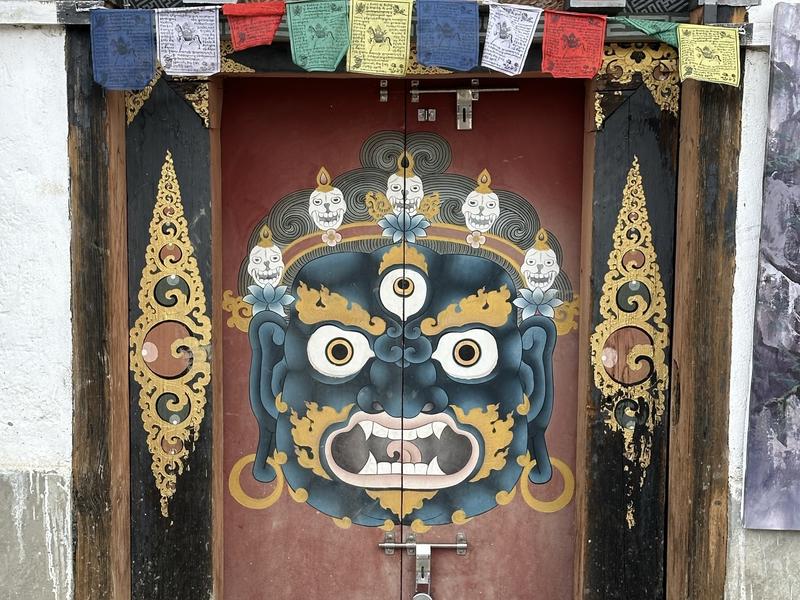
Tiger’s Nest
Taktsang Palphug Monastery, also known as the Tiger’s Nest, in its seemingly precarious position clinging to the steep mountainside, is an iconic sight. Walking the trail up to the monastery complex is often very challenging due to the altitude, but the necessarily slower pace leaves plenty of time to soak up the magnificent views. Intrepid travellers can stay overnight just above the monastery and drop down to it at dawn. Buddhist legend has it that this immensely sacred monastery was founded by Guru Rinpoche, who is said to have arrived in the mountains aboard a mystical flying tigress. Incense and ritual chanting fill the air in each shrine and meditation cave, where you can receive numerous blessings from the monks.
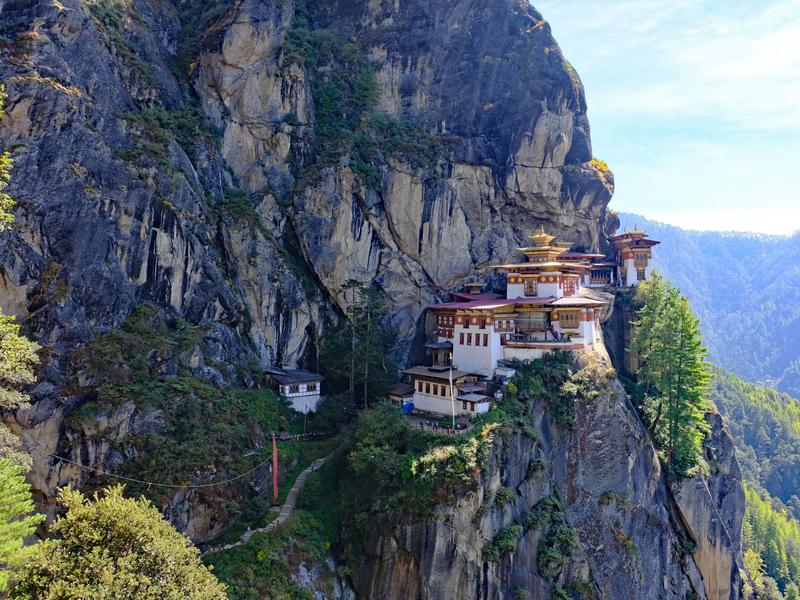
Rinpung Dzong
Its name means ‘Fortress on a Heap of Jewels’, but perhaps the greatest treasure of the Rinpung Dzong is the panorama over the valley from its fortress-like walls. Outside there is a flat section of ground where, during the annual tsechu festival, masked monks spin joyfully to the beat of drums as their efforts are wildly applauded by visitors from neighbouring villages. For yet more spectacular views over Paro Valley, a short drive beyond Rinpung Dzong brings you to a lighthouse-like structure. It was once a watchtower and now accommodates the National Museum. Thick, round walls protect collections of fierce-looking festival masks, historic weaponry and thangkas - scroll cloths painted with natural pigments to depict various deities and legends - giving historic depth to the frequent celebrations.
